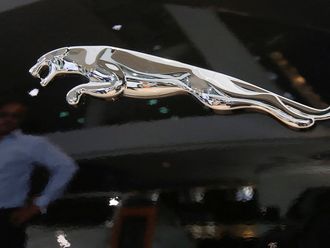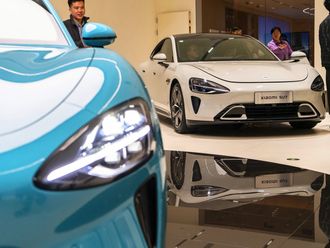The regional automotive industry has just emerged from one of its toughest years in the past decade. Due to economic volatility and other significant factors, 2016 saw a drop in car sales by 1.4 million units.
There is no doubt that the fall in oil prices and those of other commodities has had a dampening effect on the purchasing power and confidence levels of consumers in the GCC. Dealers, on the other hand, have also had to adjust to volatility in foreign currencies such as the Japanese yen, which has directly impacted their competitiveness and, thus, profit margins.
Unfortunately, these factors are likely to prevail in 2017 as well, making for an uncertain year for the industry.
If you work in the industry, you can’t help but notice a sense of panic over the drop in showroom footfall. According to the Auto Shopper Study by Google in 2016, consumers made fewer visits to showrooms than in the past, falling in Saudi Arabia from 3.3 visits in 2012 to just 2.4 visits in 2016, and with an even bigger drop in the UAE from 3.7 visits in 2014 to 2.7 in 2016.
All of this has led to fewer test drives per customer, indexed in Saudi Arabia at 1.2 in 2016 as compared to 1.4 in 2014, and 1.4 versus 2 over the same time period in the UAE. However, the descent in showroom footfall is not purely economically related; it is further augmented by a change in consumer behaviour over the years, as a result of all the latest developments in technology at their disposal.
Today, the research phase of the consumer cycle where car buyers carefully study their options, has changed significantly. From actual showroom visits of the past, consumers are now able to carefully virtually examine features of multiple vehicles across multiple brands, perhaps even under the lens of a larger pool of information, in the environment of a “webroom” instead.
Furthermore, it is also now common to use third-party comparison websites, not only to evaluate models and apply for car loans from various banks, but also get quotations for car insurance as well. This has become evident by the contraction in the time spent throughout the consumer cycle, from start to final purchase.
According to that same study mentioned earlier, in 2014 an average Saudi consumer spent 3.3 months in the purchase process while now, it takes a mere 1.4 months. The same applies to the UAE where an average of 2.9 months in 2014 has become 2.4 in 2016.
Therefore, the pathway to purchase has shifted away from the traditional outlets that car sellers essentially were in charge of, and therefore, in control of the experiences or information prospective buyers received. Moving into a more digital environment now, these automotive dealers need to take into account the new channels that shape the decision-making process and exert their influences there in order to ensure their voices are still being heard.
Another imminent implication that will directly impact sales this year is the introduction of a VAT across countries in the GCC in 2018. Since the automotive category seems not be exempt from this tax, logically any consumer intending to purchase a car in the near future will bring forward this transaction in order to avoid paying the levy.
Therefore, dealers stand to positively gain from this burst and should develop the appropriate strategies to capture those leads.
Given all these developments, sellers have little option but to become resilient and adapt their marketing and sales strategies to the new market forces. However, they can also adopt the latest innovation and developments in their practices, effectively leveraging the vast plethora of data now available to them to enhance their customer relationships and providing them with more personalised experiences.
Today, thanks to technology, a car dealer can track showroom visitors through their mobile devices and also understand which car they are interested in, based on their movement inside the showroom. This first-party data allows car dealers to target and remarked these visitors separately on their digital and social platforms.
Alternatively, they can also geo-target customers who visit other showrooms, enticing them to take a look at what they have on offer as well. Moving a little further in this direction, second-party data allows them to identify and target customers who are browsing through comparison websites for car loans or insurance.
These hot leads can then be targeted across multiple digital channels.
Therefore, a decline in showroom footfall doesn’t necessarily equate to a decrease in prospective customers. Should the right tools and resources be implemented, dealers can actually widen their scope of potential demand segments beyond just showroom visits.
Furthermore, by layering various data sets on each other, dealers can learn much, much more about their consumers than they would have traditionally, being able to target them in a more effective and efficient manner than ever before.
— The writer is a Business Unit Director at OMD.












